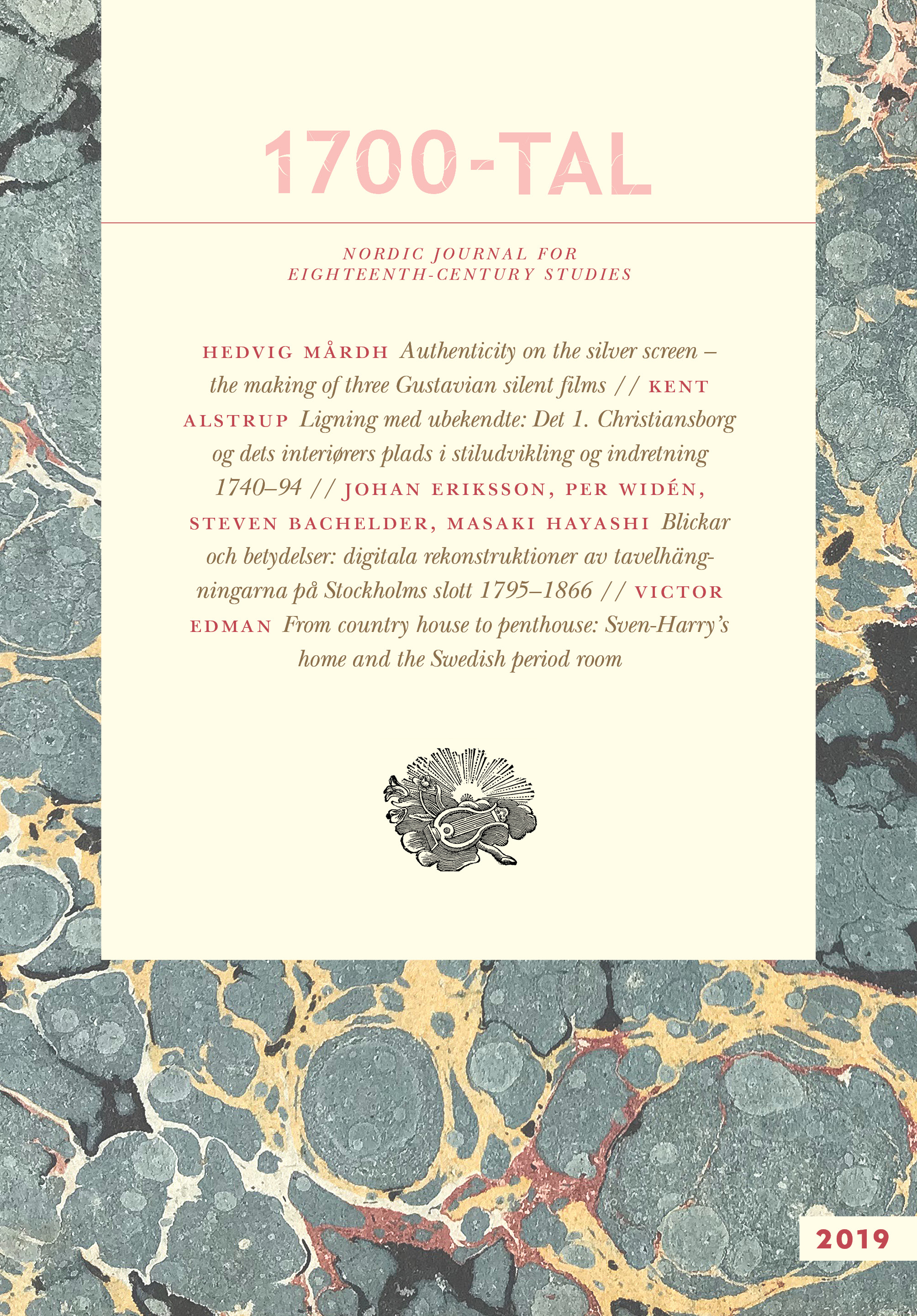From country house to penthouse
Sven-Harry’s home and the Swedish period room
DOI:
https://doi.org/10.7557/4.4882Abstract
In 2011 a new museum opened in Stockholm – Sven-Harry’s Art Museum – named after its initiator and funder, the building contractor Sven-Harry Karlsson. Besides a gallery for temporary exhibitions, the museum includes a permanent collection of art and applied art installed in a penthouse on top of the building. The installation is conceived as a full-scale replica of Karlsson’s former home in an eighteenth-century manor house. This article focuses on the reconstructed home and aims at situating it within a tradition of full-scale displays of architectural interiors – so-called period rooms – in Swedish cultural history museums. Since the start of the twentieth century, eighteenth-century architecture has had a central position in the Swedish cultural heritage. Sven-Harry’s replicated home, a small manor of the rococo era, fits perfectly into the national canon, which for a long time focused on the homes of the elites to illustrate development within the arts. Even though the recreated milieu in Sven-Harry’s museum depends on traditional museum practice, it is also typical of contemporary innovations. In the last few decades, even prestigious cultural history museums have utilized the periodroom format in unconventional ways, and the bold reconstruction of Sven-Harry’s home is clearly a representative of this trend.









